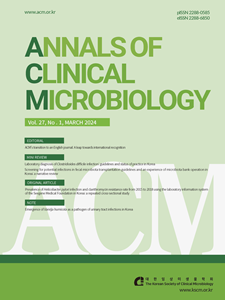Fig. 1. Number of anisakidosis cases reported in scientific articles in Korea (1971-2022).
Ann Clin Microbiol 2024;27:93-130. Anisakidosis in humans and animals and detection of anisakid larvae in fish and cephalopods in Korea: a literature review (1971-2022) Download image
Fig. 1. Functionality of Trichomonas vaginalis actin LAMP assays. (A) LAMP on 10-fold serial dilutions of T. vaginalis genomic DNA (10 ng to 1 pg per reaction) monitored by measuring absorbance. Distilled water was used as a negative control. (B) LAMP products were visualized by gel electrophoresis. Lane 1, 1 ng; Lane 2, 100 pg; Lane 3, 10 pg; Lane 4, 1 pg of T. vaginalis genomic DNA; Lane 5, LAMP product after HindIII digestion; Lane 6, distilled water; andLane M, 100-bp DNA marker. (C) LAMP products were visualized under UV light using Loopamp fluorescent detection reagent. Lane 1, 1 ng; Lane 2, 100 pg; Lane 3, 10 pg; Lane 4, 1 pg; Lane 5, 100 fg; Lane 6, 10 fg of T. vaginalis genomic DNA; and Lane 7, distilled water. (D and E) T. vaginalis at a density of 1×102 parasites/μL was serially diluted and tested using LAMP assay (D) and PCR (E) with F3 and B3 primers (Table 1). Lane M, 100-bp DNA marker; Lane 1, 100; Lane 2, 10; Lane 3, 1; Lane 4, 0.1; Lane 5, 0.01 parasite (s) per reaction; Lane 6, positive control, 100 pg of plasmid DNA containing LAMP targeting regions of actin gene; and Lane 7, distilled water. (F) Specificity of LAMP primers for detection of T. vaginalis assessed using template DNA from other microbial species. Lane 1, T. vaginalis; Lane 2, Candida albicans; Lane 3, Chlamydia trachomatis; Lane 4, Neisseria gonorrhoeae; Lane 5, Cryptosporidium parvum; Lane 6, Entamoeba histolytica; Lane 7, Giardia lamblia; Lane 8, Escherichia coli; and Lane 9, human genomic DNA. LAMP products were visualized via color change that was also observable by the naked eye under normal visible light reproduced under the CC-BY-NC license from the original article [19].
Ann Clin Microbiol 2024;27:69-79. Molecular diagnosis of parasitic diseases in Korea Download image
Fig. 5. The nematode eggs (Group IV). A. Ascaris lumbricoides (F); B. A. lumbricoides (F) in CTS specimen; C. A. lumbricoides (U); D. A. lumbricoides (U) in CTS specimen; E. Trichuris trichiura; F. T. trichiura in CTS specimen; G. Enterobius vermicularis in CTS specimen; H. E. vermicularis in a specimen of cellotape anal swab; I. Hookworm; J. Hookworm (morular stage) in CTS specimen; K. Air-bubble like hookworm egg of which a mature larva already escaped; L. Trichostorongylus orientalis. Scale bar = 25 ㎛. CTS, cellophane thick smear.
Ann Clin Microbiol 2024;27:49-67. Practical guide for the diagnosis of helminth ova in stools Download image
Fig. 4. The embryonated (cestode) eggs without an operculum (Group III). A. Taenia sp. in CTS specimen; B. Hymenolepis nana; C. H. nana in CTS specimen; D. Hymenolepis diminuta. Scale bar = 15 ㎛. CTS, cellophane thick smear.
Ann Clin Microbiol 2024;27:49-67. Practical guide for the diagnosis of helminth ova in stools Download image
Fig. 3. The unembryonated large-sized eggs with an operculum (Group II). A. Echinostomatid egg in CTS specimen; B. Isthmiophora hortensis; C. Echinostoma cinetorchis; D. Echinochasmus japonicus; E. Paragonimus westermani; F. Neodiplostomum seoulense; G. Fasciola hepatica; H. Dibothriocephalus nihonkaiensis. Scale bar = 50 ㎛. CTS, cellophane thick smear.
Ann Clin Microbiol 2024;27:49-67. Practical guide for the diagnosis of helminth ova in stools Download image
Fig. 2. The embryonated small-sized eggs with an operculum (Group I). A. Clonorchis sinensis; B. SEM-view of C. sinensis egg; C. Metagonimus yokogawai; D. Heterophyes nocens; E. Pygidiopsis summa; F. Stictodora fuscata; G. Plagiorchis muris; H. Eurytrema pancreaticum; I. Gymnophalloides seoi. Scale bar = 10 ㎛.
Ann Clin Microbiol 2024;27:49-67. Practical guide for the diagnosis of helminth ova in stools Download image
Fig. 1. Materials and procedures for the Kato-katz egg counting technique. (This figure was re-arranged based on Figs 1-8 [28])
Ann Clin Microbiol 2024;27:49-67. Practical guide for the diagnosis of helminth ova in stools Download image
Fig. 1. The experience with donor screening of Microbiotix Inc., a fecal microbiota bank in Korea (August 2017-June 2023). MDRO, multidrug-resistant organism.
Ann Clin Microbiol 2024;27:11-17. Screening for potential infections in fecal microbiota transplantation guidelines and an experience of microbiota bank operation in Korea: a narrative review Download image
Table 7. Species of marine fish examined for anisakid larvae* in Korea (1968-2012)†
Ann Clin Microbiol 2024;27:93-130. Anisakidosis in humans and animals and detection of anisakid larvae in fish and cephalopods in Korea: a literature review (1971-2022) Download table Species of fish/cephalopods Korean common name Chun et al. (1968) [169] Lim (1975) [170] Kim et al. (1988) [171] Woo and Kim (2000) [125] Song et al. (2001) [177] […]
Table 6. Clinical symptoms and signs of anisakidosis patients in Korea (1971-2022)
Ann Clin Microbiol 2024;27:93-130. Anisakidosis in humans and animals and detection of anisakid larvae in fish and cephalopods in Korea: a literature review (1971-2022) Download table Chief complaints/major signs No. of patients (%) Acute abdomen, epigastric pain 510 (59.9) Nausea and/or vomiting 99 (11.6) Chronic gastritis, chronic gastric pain 31 (3.6) Intestinal obstruction, ileus, intussusception, […]
